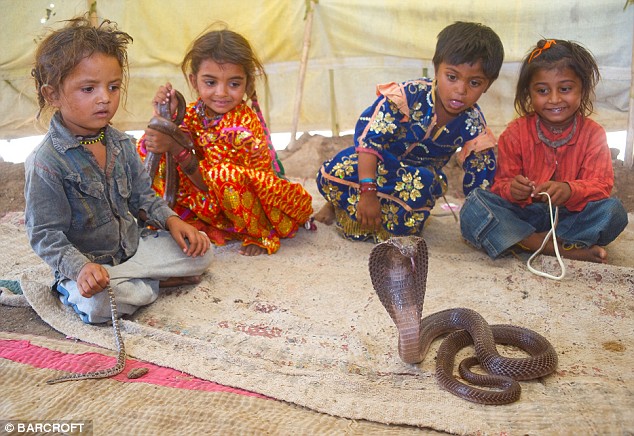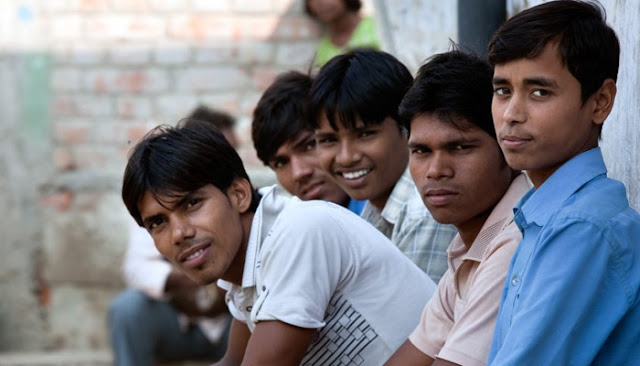Ten Unique Villages in India
‘The soul of India lives in its villages’. Beautiful lush green landscapes to winter wonderlands, fresh air, blue skies, India offers it all. If you are going to go on the lookout for something extraordinary or unique too, our country will not disappoint you. Each village in India has a culture, colours , and a different story to tell. If someone decides to explore every single village and know people there, it will take several lifetimes. I have researched further and found some villages speaking a bizarre tone. Here is a list of ten unique villages in the country you won't believe really exist:
1. Shetphal, Maharashtra, India:
About 200 km from Pune, Maharashtra, in the Sholapur district, is located a village named Shetpal or Shetphal. Here, cobra snakes have a permanent abode in each and every house; snakes roam around in every corner of the village without any restrictions on their movement, are like family and worshipped daily in every heart and home in this village!
None of the 2,600 plus villagers ever harm them in any way. Neither the cobras, nor the residents live in fear of each other. So far, no incident of snake bite has been reported in this village.
A special corner in the house is set aside, exclusively for the cobras to come and cool off at any time they wish. If anyone in the village constructs a new house, he makes sure to devote a hollow portion of the dwelling as devasthanam for the snakes.
Snakes are treated as pets in this village, and even visit the schools when a class is in progress, kids often play with them at times.
2. Shani Shingnapur, Maharashtra, India
This holy village of Shani Shingnapur, is now well known for its unique feature, there are no doors in the entire village. Receiving over 40000 devotees each single day this village has no doors or locks. Not even banks have doors here. What's even more shocking is that people keep their valuables and money in the open, and not in almirah. They believe that Lord Shani will protect them from any calamity and they sleep off peacefully.
There is no theft and thus, this place doesn't require a police station.
3. Hiware Bazaar, Maharashtra, India

Tucked away in Ahmednagar district of Maharashtra Hiware Bazaar was struck with poverty and drought some 30 years ago. But in 1995 the fate of the village changed where it transformed into a wealthy village. In the past 15 years, average income has risen 20 times. This was no magic but the village just used common sense. It used funds from government schemes, to regenerate its natural resources-forests, watershed and soil, led by a strong village body. Of the 235 families residing here, 60 are millionaires.
Kuldhara is an abandoned village in the Jaisalmer district of Rajasthan, India. It is known for being cursed and haunted. Established around the 13th century, it was once a prosperous village inhabited by Paliwal Brahmins. As per legend, it has been abandoned for over 200 years because of the debauchery and unscrupulous tax collecting methods of the Jaisalmer State minister Salim Singh ( or Zalim Singh) and who set his eyes on the beautiful daughter of the village chief. It was his brutal acts that the villagers left their homes and ran away. They also cursed the village and that is why it is still haunted. Over years, Kuldhara acquired reputation as a haunted site, and the Government of Rajasthan decided to develop it as a tourist spot in the 2010s.
Barwan Kala is a village located in the “Tehsil Adhaura” of “Kaimur District of the state of Bihar, in India. This village is also known as the ‘Village of bachelors’. It is said that bachelors in this village has not seen a single marriage in the last 50 years. The reason is shocking: it is the lack of infrastructure and amenities that no one sends their daughter into this village. They feel no outsider would give the hand of their daughters to the village youth which is disconnected from the rest of the world in terms of no telecommunication, irrigation, power & water.
It is estimated that it is the highest number of unmarried males in any village of Bihar.
6. Korlai village, Raigad, Maharashtra. About an hour away from Alibaug, Maharashtra , a village speaking Portuguese! Unique, isn’t it? It’s quite amusing to visit a village in India and being greeted in Portuguese, even the names are Portuguese and people eat Portuguese food. Once called ‘Morro de Chaul’. Morro, in Portuguese, meaning 'a small, rounded hill’. Though it was built by Portuguese, it has been hundreds of years to keep the heritage alive. The residents speak a dialect of the Portuguese Creole called ‘kristi’. The word Creole eventually transformed to Korla, over the years.
About an hour away from Alibaug, Maharashtra , a village speaking Portuguese! Unique, isn’t it? It’s quite amusing to visit a village in India and being greeted in Portuguese, even the names are Portuguese and people eat Portuguese food. Once called ‘Morro de Chaul’. Morro, in Portuguese, meaning 'a small, rounded hill’. Though it was built by Portuguese, it has been hundreds of years to keep the heritage alive. The residents speak a dialect of the Portuguese Creole called ‘kristi’. The word Creole eventually transformed to Korla, over the years.
7. Jambur Village, Gujarat, India Jambur, the African village of Gujarat, near Gir is located in the heart of Gujarat. It is famous only because of mostly Gujarati speaking Africans living there and it is quite strange to stumble upon a community that is African in origin but Gujarati in speech and manner. They have made India their home and are known as Siddhis or ‘Habshis’ and have been living in India for the last 200 years.These people are Afro-Arab descendants and were brought by Sheikhs from Arabia as slaves. Since Islam was the prevalent religion, they followed their new faith and adapted to the local environment.
Jambur, the African village of Gujarat, near Gir is located in the heart of Gujarat. It is famous only because of mostly Gujarati speaking Africans living there and it is quite strange to stumble upon a community that is African in origin but Gujarati in speech and manner. They have made India their home and are known as Siddhis or ‘Habshis’ and have been living in India for the last 200 years.These people are Afro-Arab descendants and were brought by Sheikhs from Arabia as slaves. Since Islam was the prevalent religion, they followed their new faith and adapted to the local environment.
8. Kodinhi, Kerala, India
Known as the ‘Village of twins’, Kodinhi, a remote village in Kerala’s Malappuram district, is a mystery to researchers. The village came to international attention for the unusually large number of multiple births in the region. Even women married to far off places are also known to have given birth to twins and even triplets. Out of the population of 2000 families, this village has 500 pairs of twins. In this village 10% of the population is twins.
Mattur or Mathur is a village in Shimoga district near the city of Shimoga, Karnataka, India is known for the usage of Sanskrit for day to day communication. Although the general language of the state is Kannada, Sanskrit is a way of life in this village. It is the only village in India where more than 90% of the people converse in Sanskrit in their daily lives. Pretty unusual and slightly amazing that the village is trying to keep Sanskrit alive.
10. Rongdoi village, Assam, India
The most bizarre of them all, the people of this village organise frog weddings as they think that’s the way to please the rain God. There is a mythological belief among the Assamese that if wild frogs are married off by following the Hindu rituals of marriage, it can help bring rainfall.
Hundreds of village folk, young and old, boys and girls gather at Rongdoi village till late at night to witness the unconventional marriage. According to a myth, if wild frogs caught by people are married off with Vedic and traditional marriage rituals like human beings, it can help bring rainfall in the coming days.
Wedding takes place followed by a contributory bhoj (feast) and the frogs are let loose in a pond.
You may call it bizarre or call it unreal, you can’t deny the fact that the country has so much to offer in terms of culture and uniqueness. I have no hesitation in saying that India is so vast that if someone decides to explore each and every village and know people there will take several lifetimes.
Inputs n pics from Google,TOI, Wikipedia, Jagran
Pls follow me on envigstraveldiary and medium









Comments
Post a Comment